The INSAS – Is this the worst assault rifle ever made?
- By Travis Pike
Share This Article
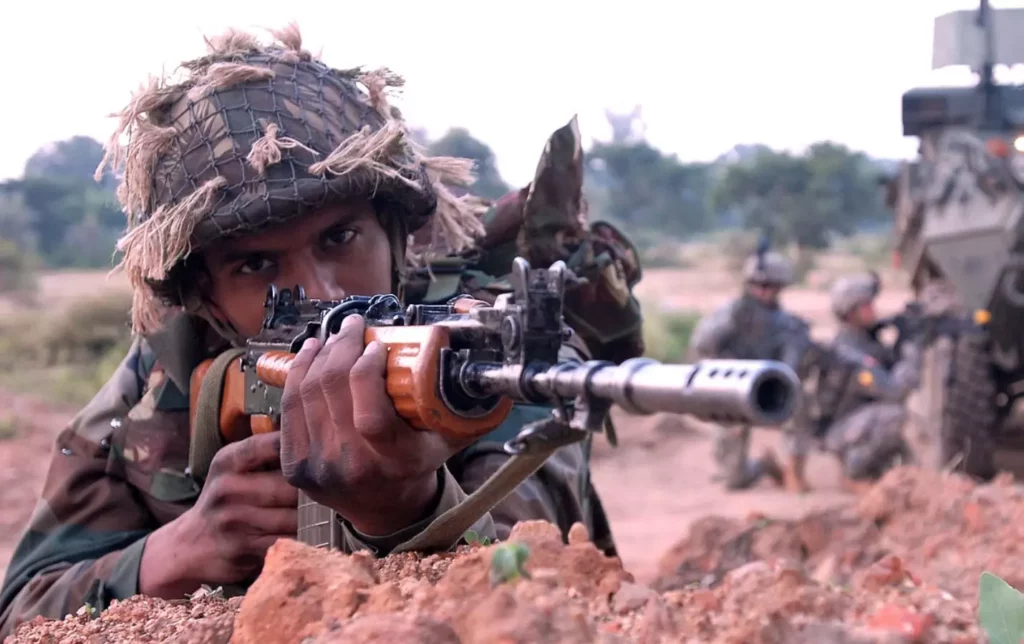
India gained its independence from the U.K. in 1947 but by the 1980s it was still using mostly British rifles including the ancient Lee-Enfield bolt-action rifle and the more modern, but dated L1A1 FN FAL. The Indian government wanted to domestically produce a rifle and switch from 7.62mm battle rifles to lighter intermediate assault rifles. As a result, the 5.56mm INSAS rifle was created.
INSAS stands for Indian Small Arms Systems and was designed by the Armament Research and Development Establishment of India and produced by the Ordnance Factories Board. It has served for nearly 30 years with the Indian Armed Forces. However, it’s become known as one of the worst assault rifles of our era.
The INSAS rifle began its service life in the late 1990s and is only now being replaced. However, since the beginning, the rifle has had significant issues. Nevertheless, the Indian government stubbornly clung to the design and continually attempted to fix the rifle until recently, when it finally decided to replace it with foreign imports.
Breaking down the INSAS rifle
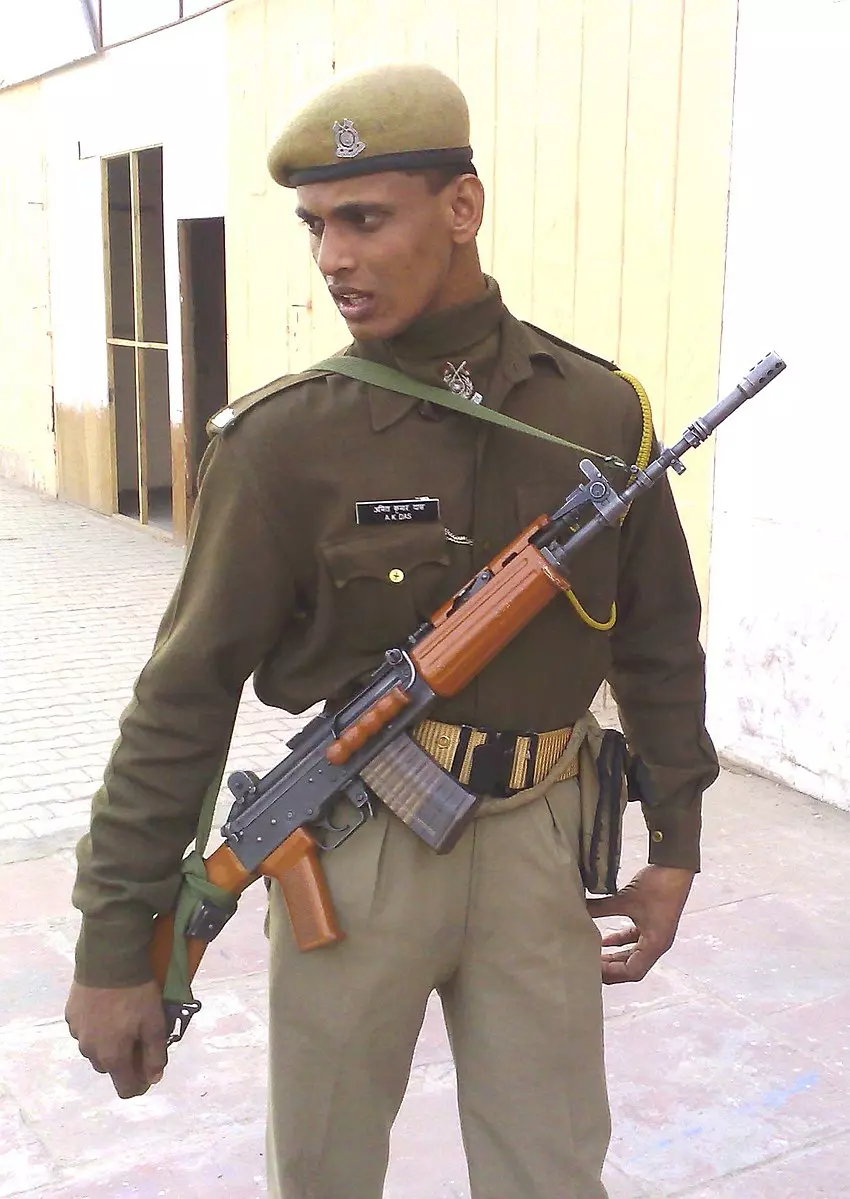
At first glance, the INSAS rifle seems to be fairly standard as far as modern assault rifles go. It is a 5.56mm caliber gas-operated rifle that feeds from a detachable polymer box magazine. It has a long-stroke gas-piston system that’s very similar to the AK series’ of rifles’, down to the rotating bolt. The user can choose between semi-automatic, three-round burst, and fully automatic modes of fire. The rifle has an 18.3-inch barrel and weighs 8.86 pounds unloaded.
The gun has a manual gas regulator to allow a gas cutoff for rifle grenades. This feature was found on the FAL the Indian Army had used prior to the INSAS. The gun used an HK-style charging handle that is located above the barrel on the left-hand side of the weapon; the fire selector sits above the pistol grip. The rifle has iron sights and more modern variants have optics and rails to accommodate them.
The furniture has changed over time. Early models had wood furniture, but polymer has become the more dominant furniture as of late. Some variants feature folding stocks, and they are often referred to as paratrooper models. The rifle was designed to work with a 20-round magazine, but there are 30-rounders designed for the LMG variant.
Related: These are 5 weird members of the M16 family
The INSAS family
The INSAS series is a family of rifles. The LMG variant is an automatic rifle, features a longer 21-inch barrel and weighs 13.7 pounds. It has an integral set of bipods and can be mounted to a tripod. Most of the time, the phrase LMG refers to a belt-fed weapon. However, this is a weapon fed entirely for 30-round box magazines.
The LMG variant is designed to provide fire support and is just a slightly bigger, heavier version of the basic INSAS rifle.
Alongside the bigger machine gun is the smaller carbine called Amogh. This carbine was designed for close-range firefights and uses the same operation as the INSAS rifle but fires the 5.56x30mm MINSAS round instead, which is essentially a shortened 5.56 NATO cartridge with less recoil, muzzle flash, and concussion due to its 13-inch barrel. It also has a less effective range and tops out at about 300 meters.
Related: The FN FNC: The rifle of Ukraine’s Foreign Legion
What’s the problem with this rifle?
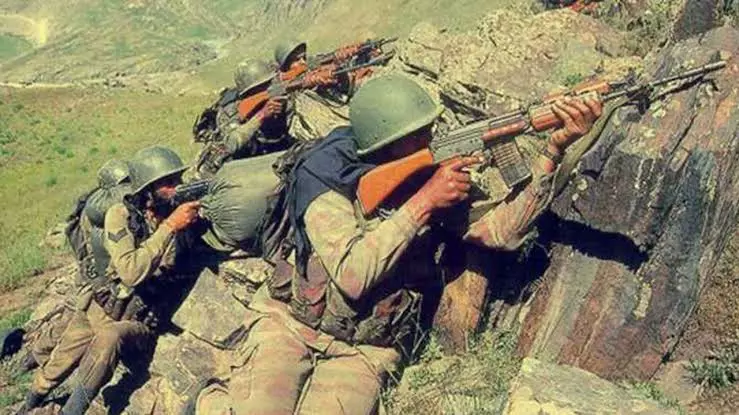
In 1999 the INSAS series of rifles got its first trial-by-fire during a three-month conflict known as the Kargil War that was fought between India and Pakistan. The two countries found themselves in an armed conflict after Pakistani troops infiltrated the Indian side of the Line of Control along their shared border. This war was fought high in the Himalayas in often well-below-freezing temperatures that got as low as -20 degrees Celsius.
INSAS’s battle debut was considered a spectacular failure. The cold weather would cause the polymer magazines to crack and break apart and the weapon would also randomly fire full auto regardless of what the user had set the setting to. The rifle was prone to all manner of failures in a firefight and, in some instances, apparently sprayed weapon lubricant into the face of the user. The gas regulator, which the weapon relies on to function, would also occasionally break.
Related: This is why burst fire sucks
Nepal also purchased the INSAS and had similar results. In 2005, the Nepalese army engaged in and lost a 10-hour battle with Maoist rebels. During the battle, the INSAS rifles apparently overheated and seized up and 43 Nepalese soldiers were killed.
Users have also complained about the gun’s furniture breaking frequently or the charging handle frequently binding when the user tries to operate it. Further, professional examination resulted in the opinion that the rifle’s cover is overly complicated for no real reason.
Lastly, due to their needlessly complicated construction, the rifles are quite expensive to produce.
What’s next?

The Indian Central Reserve Police used the rifle heavily for counter-insurgency operations, and they were the first to take a stand demanding INSAS be dropped and replaced by Kalashnikov-type rifles. In 2016 the Indian government attempted to both fix the INSAS’s issues and modernize the platform with the Excalibur variant. However, this was scrapped in 2018 when the country decided to purchase AK-203 rifles from Russia and SIG 716i rifles. It also plans to replace the LMG variant with the IWI Negev machine gun.
The weapon’s life was plagued by failure and frustration. While domestically producing weapons can be valuable, it does take a degree of humility to admit that your rifle sucks and you should go back to step one. For the environment of India, the AK series rifles do make sense, especially in cold environments where they are known to work quite well. They can’t be any worse than the INSAS.
Feature Image: An Indian army soldier, with U.S. Soldiers from 2nd Squadron, 14th Cavalry Regiment, 2nd Stryker Brigade Combat Team, 25th Infantry Division, from Schofield Barracks, Hawaii, prepares to advance towards a village during a dismounted patrol during Exercise Yudh Abyas 09, a bilateral exercise involving the Armies of India and the United States. (Photo by Staff Sgt. Crista Yazzie U.S. Army, Pacific Public Affairs)
Read more from Sandboxx News
- The gift card the military community has been waiting for: Sandboxx Gift Cards
- Watch: Chinese warship nearly collides with US destroyer near Taiwan
- Sonic boom shakes DC as F-16s intercept Cessna before crash
- Which will be the company that will build America’s next stealth fighter?
- The German sniper mask – A visage of terror
Related Posts
Sandboxx News Merch
-

‘AirPower’ Classic Hoodie
$46.00 – $48.00 Select options This product has multiple variants. The options may be chosen on the product page -

‘Kinetic Diplomacy’ Bumper Sticker (Black)
$8.00 Add to cart -

‘Sandboxx News’ Trucker Cap
$27.00 Select options This product has multiple variants. The options may be chosen on the product page

Travis Pike
Travis Pike is a former Marine Machine gunner who served with 2nd Bn 2nd Marines for 5 years. He deployed in 2009 to Afghanistan and again in 2011 with the 22nd MEU(SOC) during a record-setting 11 months at sea. He’s trained with the Romanian Army, the Spanish Marines, the Emirate Marines, and the Afghan National Army. He serves as an NRA certified pistol instructor and teaches concealed carry classes.
Related to: Breaking News, Gear & Tech
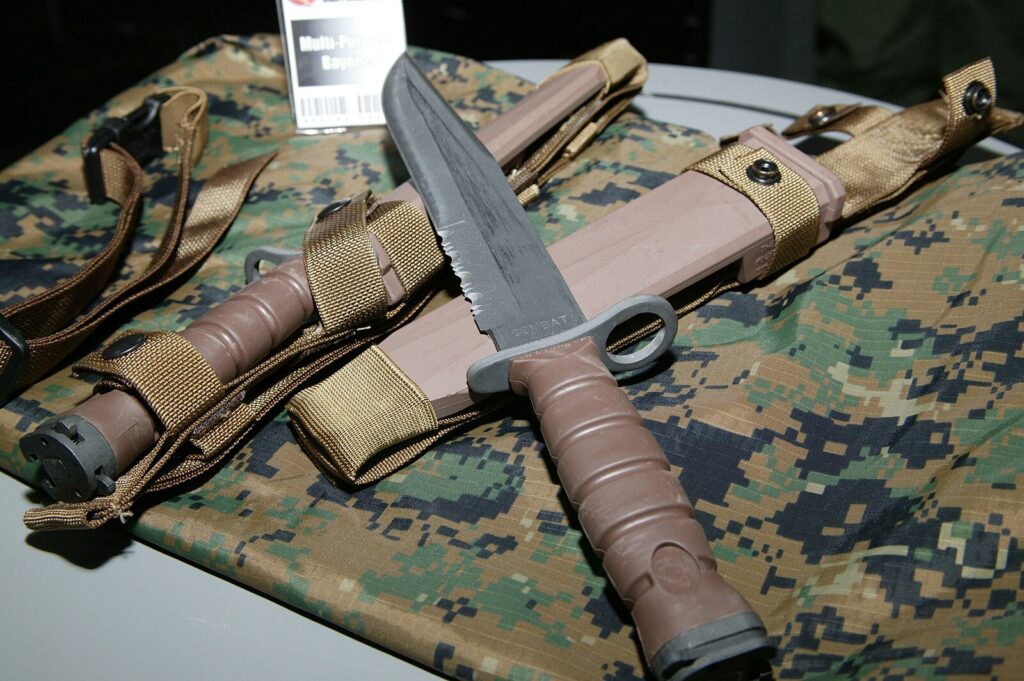
The five best bayonets still in use around the world
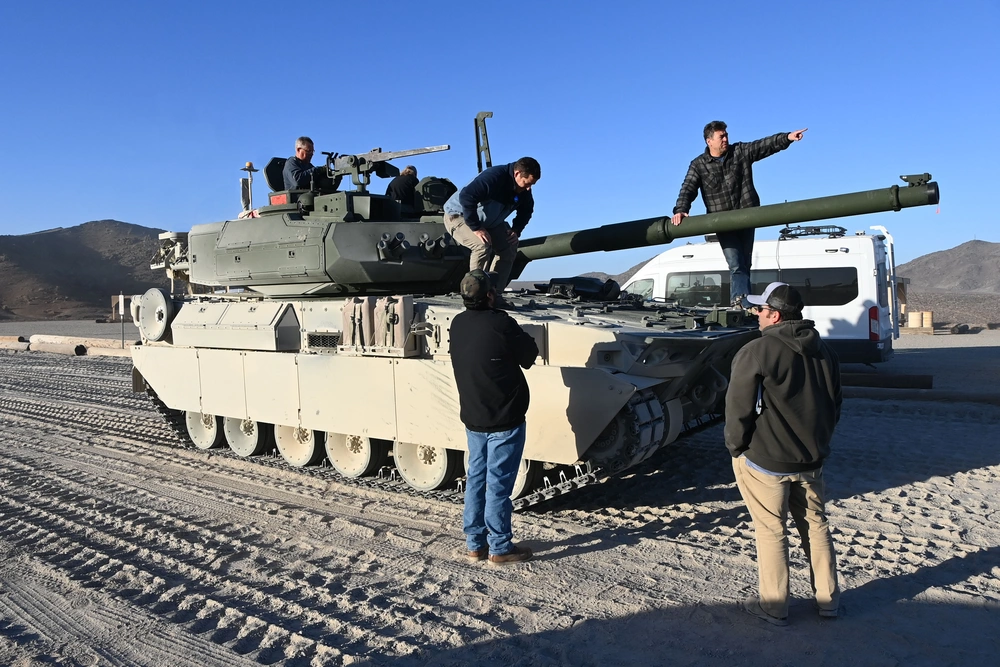
The M10 Booker and how the Army flubbed a tank
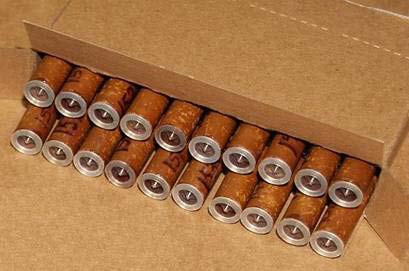
Caseless ammo could be the future of cartridges
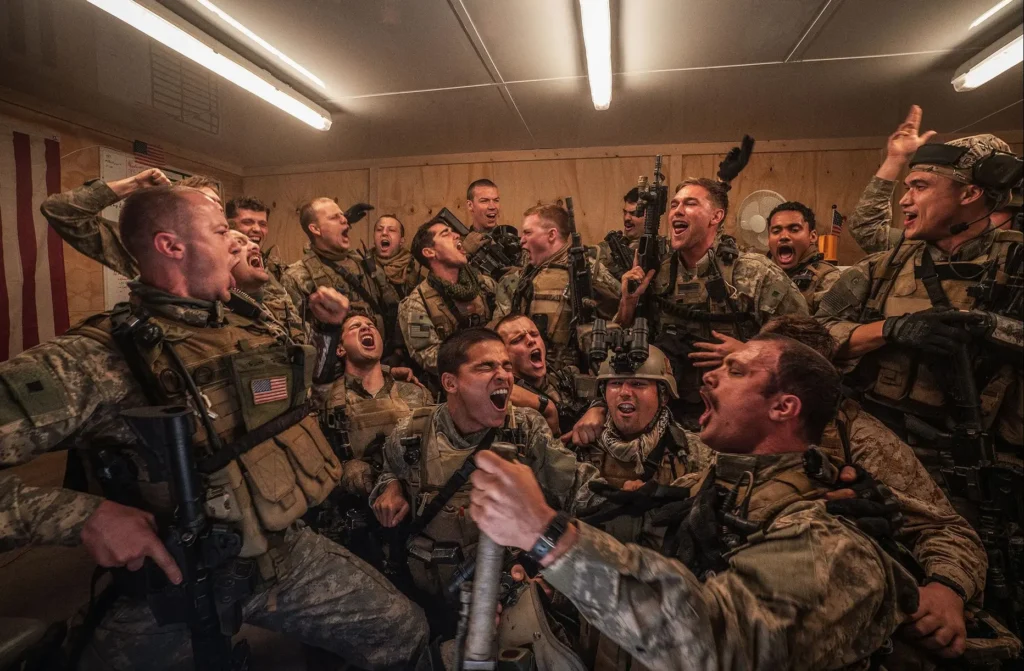
‘Warfare’ shows the brutal reality of combat for an elite unit
Sandboxx News
-

‘Sandboxx News’ Trucker Cap
$27.00 Select options This product has multiple variants. The options may be chosen on the product page -

‘AirPower’ Classic Hoodie
$46.00 – $48.00 Select options This product has multiple variants. The options may be chosen on the product page -

‘AirPower’ Golf Rope Hat
$31.00 Select options This product has multiple variants. The options may be chosen on the product page -

‘Sandboxx News’ Dad Hat
$27.00 Select options This product has multiple variants. The options may be chosen on the product page
